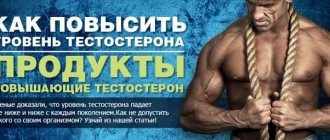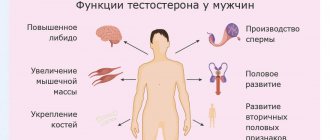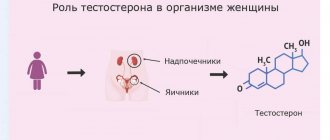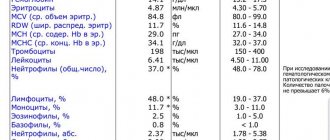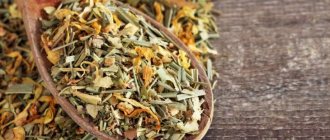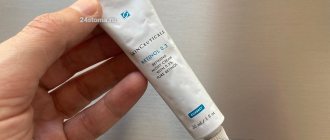Drugs to increase testosterone are popular not only in the treatment of various disorders and diseases, but also in strength sports. The fact is that this male sex hormone performs such a large number of tasks in the body that the slightest lack of it immediately leads to disturbances in well-being and general physical condition. For medicinal purposes, drugs to increase testosterone are used to raise its concentration in the body to the required level. In sports practice, the purpose of using these drugs is somewhat different. Since this hormone accelerates the processes of protein synthesis, it can be used to build muscle faster, which is why it is valued in many sports, primarily strength sports. Thus, our task today is to figure out which pharmaceutical drugs increase testosterone for bodybuilding.
Introduction
In the previous article, “Testosterone in Bodybuilding,” we examined in detail its role in the body of men and women, and also found out why it is so valued in bodybuilding. As for women, excessive levels of testosterone in the body are undesirable for them, which means that the use of drugs to increase testosterone may be necessary solely for therapeutic purposes. As for men, we can safely say that the higher the concentration of testosterone in their body, the more a man is a man. Thus, we logically approach our topic today. Pharmacy drugs to increase testosterone in bodybuilding can be used by men, but definitely should not be used by women.
Here, however, it is worth touching on such an important topic as personal hormonal levels. The fact is that drugs to increase testosterone are created specifically and only for therapeutic purposes. Taking them can only be recommended if you have been tested and your doctor has confirmed that this is the only way for you to increase testosterone. But if you do not have any disturbances in the secretion of this hormone, then in fact, additional intake of testosterone will lead to its excess in the body, which in turn will lead to the development of irreversible consequences. The main one will be the cessation of the production of your own testosterone. When the body feels that the hormone is entering it from the outside, it concludes that there is no point in producing it on its own and stops doing so.
Thus, it turns out that the use of testosterone in bodybuilding is a rather risky undertaking. On the one hand, you interfere with your hormonal balance, thereby disrupting it. On the other hand, you risk that the body will stop producing its own testosterone. One way or another, the author of this article does not advertise any drugs and does not encourage their use, which means whether to take them or not is a matter of personal responsibility for each individual person. But let's return to our topic. Pharmaceutical drugs to increase testosterone are used almost everywhere. Moreover, many of them are sold without a prescription at all. Actually, these drugs will be discussed further.
Diet correction is an effective means of maintaining men's health
There are many ways to increase testosterone levels in men. The most effective are: • regular strength training; • full 8-hour sleep; • sufficient intake of vitamins, microelements, amino acids and other beneficial substances; • normal weight (i.e. no excess weight); • exclusion of xenoestrogens contained in steroid preparations, pesticides, which can be used to treat any plant product (they can enter the body when spraying an air freshener, with food from plastic containers).
All methods help reduce the concentration of substances that suppress testosterone synthesis. Correcting the diet allows you to provide the body with useful substances and vitamins that stimulate the production of male androgen.
Types of testosterone for bodybuilding
Drugs to increase testosterone levels are produced in various forms of release. However, despite the form, each of these drugs is based on a synthetic analogue of the male sex hormone - testosterone. The following forms of release of such drugs are known in pharmaceuticals: tablets and capsules, gels and patches, as well as solutions for injections. Each of these forms has its pros and cons. For example, tablets and capsules have a beneficial effect on the body as a whole, and they are easy to take and digest. The disadvantage of these release forms is the short duration of the effect. That is, testosterone in tablets and capsules is quickly eliminated from the body, which makes it impossible to ensure a long-term effect of its effects.
As for forms such as gels and patches, their advantage is that they are able to have a local effect. That is, they are recommended to be applied pointwise, in those places where their effect is necessary or appropriate. Gel pharmaceutical preparations that increase testosterone are able to be absorbed faster through the skin and enter the bloodstream, which means faster than tablets have an effect on the body. This form of release has a much longer effect, but it also has its drawbacks. It lies in the fact that with frequent use, a gel or patch can cause irritation and inflammation of the skin in the place where they are applied, which means that the frequency of their use should be low.
Finally, the most popular form of drug release for increasing testosterone is injections. The main advantage of this form of release is the speed of its effect. Because the needle injects the drug directly into the bloodstream, the body does not have to spend time and effort digesting and absorbing the pill or absorbing the gel through the skin. The effect of injectable testosterone preparations is considered the most productive, including due to the fact that they are able to have an effect over a long period of time. The disadvantage in this case is considered, firstly, inconvenience, since injections require syringes, which must be purchased separately. Secondly, the disadvantage is the directly higher price relative to the same tablets, capsules, patches and gel.
The best drugs to increase testosterone
An increase in the concentration of testosterone in the blood occurs medicinally, that is, through the use of special drugs. We have already examined the types of drugs that are produced for these purposes, but now it is time to describe their specific names. To be honest, not all of them are imported into our country, not all can be found in a regular pharmacy and not all are sold without a prescription. But, since there is a demand among athletes who engage in bodybuilding, there is also a supply. This means that such drugs to increase testosterone are often sold in online stores that specialize in selling sports supplements and other “auxiliary” substances, and very often, they are much easier to find there than in a pharmacy.
Testosterone tablets for bodybuilding
Andriol
Andriol is a source of testosterone for oral use. The active ingredient of the drug is testosterone undecanoate, which is presented in the form of a fatty acid ester of natural testosterone. In its pure form, testosterone is inactive when taken orally, as it is quickly metabolized even before it enters the blood. In turn, the drug Andriol does not have this drawback and does not undergo primary hepatic metabolism, but is evenly distributed in the lymphatic system and thus retains its activity. The dosage is usually set individually. For therapeutic purposes, it starts at 40 mg per day. In sports practice, everything also depends on the athlete’s build, body weight and the purpose of using the drug.
Tamoxifen
Tamoxifen belongs to the group of antiestrogens - drugs that block the action of the hormone estrogen. Taking the drug increases the production of the luteinizing hormone prolactin and increases the secretion of follicle-stimulating hormone by the pituitary gland, resulting in an increase in testosterone production in the body. Also on the positive side, Tamoxifen is characterized by its ability to reduce the level of bad cholesterol. The disadvantages include its relatively high toxicity, which often results in loss of appetite, dizziness, nausea and vomiting. This drug is the main component in post-cycle therapy. For therapeutic purposes, the average dosage is 10-20 mg per day.
Tribestan
Although this drug has a hormonal effect, it does not have a synthetic, but a plant base. This is a completely natural product, the composition of which is based on the herb extract of Tribulus creeping. The above-ground part of this plant contains organic steroid compounds, which cause stimulation of the human hormonal system. The drug activates the secretion of testosterone, increases endurance, helps build muscle mass, and also eliminates the symptoms of impotence. Thanks to these properties, it is highly popular among both amateurs and competitive bodybuilders. For therapeutic purposes, the dosage starts from 1-2 tablets per day.
Impaza
This drug is positioned by the manufacturer as a means to stimulate and normalize potency. The drug normalizes libido, increases sensitivity and has a beneficial effect on overall well-being. The composition contains affinity-purified antibodies to endothelial NO synthase. The drug increases its activity, restores endothelial production of nitric oxide (NO), increases the content of cyclic guanosine monophosphate in smooth muscles, which leads to improved blood circulation. Despite the fact that this drug for increasing testosterone is considered homeopathic, that is, doubtful, nevertheless, it is in wide demand among doctors and patients, as well as among athletes.
What vitamins are needed by the male body and why?
A varied diet that satisfies the need for vitamins, minerals and trace elements is necessary for the full functioning of human organs and systems. Nature has established that the male, as well as the female, body is capable of independently producing some vitamins. For example, when exposed to sunlight, vitamin D is synthesized on the surface of the skin.
Some B vitamins are synthesized in the intestines. Therefore, it is necessary to monitor the condition of the digestive organs, which ensure complete fermentation and absorption of nutrients. An important vitamin for men's health is retinol or carotene. Without it, the synthesis of male sex hormones does not occur. Vitamin A is responsible for the production of normal sperm volume and stimulates the secretion of testosterone. Carotene has a mutual bond with zinc. They contribute to the effective assimilation of each other.
Vitamin B1 necessary for a full sexual life
. With thiamine deficiency, the activity of the thyroid gland is suppressed, which leads to a decrease in sexual desire and a decrease in testosterone. Magnesium is necessary for the full absorption of vitamin B1.
Riboflavin is a stimulant of sexual desire. Vitamin B2
improves iron absorption.
Its concentration in the blood decreases sharply during stressful situations. Vitamin B3
maintains vascular tone, improves blood supply to the genitals, promotes good mood and sexual activity.
In pharmacology you can find its other names - niacin, vitamin PP or nicotinic acid. Choline or vitamin B4
refers to substances that are normally produced by the human body. With its help, the synthesis of acetycholine occurs, which is a transmitter of nerve impulses. Vitamin B4 is responsible for erection. Choline is included in the structure of lecithin.
Vitamin B5
is responsible for endurance, strength indicators, normal testosterone production, and a stable emotional background of a man.
Pantothenic acid (vitamin B5) is a necessary component for the complete absorption of biotin, folic, ascorbic, and ascorutic acid, which are involved in the processes of the male reproductive system. Vitamin B6 is responsible for the strength of erection and the quality of orgasm. Pyridoxine is destroyed extremely quickly by smoking and drinking alcohol. Biotin or vitamin H (B7)
is synthesized in the intestines. It helps preserve the youth of the body and improves the functions of the male genital organs. Actively interacts with pantothenic, folic (vitamin B9) acid, cyanocobolamin (vitamin B12). It is better absorbed in combination with magnesium.
Vitamin B9 or folic acid is responsible for the full maturation of sperm and a sufficient amount of seminal fluid
With its deficiency, the degree of absorption of other vitamins belonging to group B decreases.
Vitamin B10
is an important component of erythropoiesis. Para-aminobenzoic acid (PABA) promotes the production of vitamin B9, being part of its structural structure. Participates in the process of sperm formation, supports erectile function, and prevents the aging of the body.
Vitamin B12
actively improves the quality of seminal fluid, is used for male infertility.
Cyanocobolamine increases sexual desire and pleasure during sexual intercourse. For complete absorption, it is necessary to consume it in combination with calcium. Vitamin C
increases the elasticity of the walls of blood vessels, the production of testosterone, improves blood circulation, the functioning of the gonads, and, as a result, the duration and intensity of orgasm, and prevents the development of prostatitis.
Calciferol or vitamin D is involved in calcium-phosphorus metabolism. Indirectly affects the quality of sperm. Calciferol combines vitamin D2 (ergocalciferol), D3 (cholecalciferol) and others into one group. Tocopherol or vitamin E
normalizes blood circulation in the genital organs. Thanks to it, every cell of the male body is saturated with oxygen, testosterone increases. Vitamin E is effective only when it is supplied regularly and in the right quantity through food.
Testosterone for bodybuilding in gels and patches
Androgel
This drug is intended for external use. It must be applied in a thin layer to the surface of the inner forearms, as well as to the abdominal area. An average daily dosage of just 5 grams increases testosterone levels in the blood by 2.5 ng/ml. In this case, the maximum daily dosage should not exceed 10 grams. The advantage of Androgel is its high absorption rate. You can raise testosterone with a pharmaceutical drug in just 5-6 minutes from the moment it is applied to the skin. An increase in testosterone concentration leads to an acceleration of protein metabolism, a decrease in the amount of adipose tissue, the development of striated muscles, as well as the excretion of potassium phosphates, sodium chlorides, nitrogen and water by the kidneys.
Androderm
This drug is produced in the form of patches. Each patch contains 2.5 milligrams of the male sex hormone - testosterone. Packages are available in packs of 30 and 60 patches. The patches must be applied to the shoulder, back or thigh. It is recommended to do this in the afternoon, towards evening, and must be worn for 24 hours. The advantage of this drug for increasing testosterone is the duration of its action. Testosterone, which is contained in Androderma, is absorbed into the vascular system through the skin and exerts its effect throughout the entire time the patch is worn. As mentioned earlier, applying patches to the same place is not recommended, as this causes skin irritation.
Testosterone for bodybuilding injections
Nebido
This drug is a solution for intramuscular administration. It is administered through a syringe, in the amount of one ampoule at a time. The ampoule contains 1000 mg of the active substance - testosterone undecanoate in 4 ml of injection solution. For therapeutic purposes, injections are made once every 3-4 months. During this period of time, Nebido maintains the required level of the hormone testosterone in the body, and does not lead to its excess at all. This over-the-counter bodybuilding testosterone is not used as often as the following injectables, but it has the advantage of being easier to obtain in some cases. This makes it quite popular among bodybuilders.
Sustanon 250
Sustanon is a mixture of four different testosterone esters. It contains 30 mg of testosterone propionate, 60 mg of testosterone phenylpropionate, 60 mg of testosterone isocaproate and 100 mg of testosterone decanoate. Such a diverse composition is explained by the fact that each form of testosterone presented above has a different absorption rate, which allows you to maintain a high level of anabolic hormones in the blood for a month. This eliminates the need for frequent injections. For therapeutic purposes, Sustanon is injected only once every three weeks. Despite the fact that this drug is often perceived as a combined course, in fact this is not entirely true, because each of its components is converted only into testosterone.
Omnadren 250
Omnadren is completely identical to Sustanon, as it has the exact same composition. It also contains 30 mg of testosterone propionate, 60 mg of testosterone phenylpropionate, 60 mg of testosterone isocaproate and 100 mg of testosterone decanoate. The only reason why athletes prefer this or that drug is simply because of its availability. In terms of application, the varied composition allows the dosage to vary greatly, from 250 mg of the drug per week to 1000 mg per day. Although the optimal dosage is still considered to be 500 mg once a week, intramuscularly. To achieve maximum effect, many bodybuilders combine Omnadren with various anabolic steroids, which, for obvious reasons, are not sold in pharmacies.
Testosterone propionate
This is truly the most popular pharmaceutical drug for increasing testosterone levels. All major pharmaceutical companies produce it. It is sold in every pharmacy, literally all over the world. This is because if you need to increase the level of testosterone in the body, then you will not find a better substance than one made on the basis of this hormone. The drug testosterone in bodybuilding helps improve nitrogen balance, increase the level of insulin-like growth factor in muscles, helps build muscle mass, reduces body fat, shows body contour, increases strength, reduces cholesterol in the blood and more. Its main disadvantage is its short period of action. Injections should be given every other day. The second disadvantage is the high cost.
Pitfalls of testosterone therapy
26.04.2018
114153
3
In the next episode of the program “An Hour with a Leading Urologist” Stepan Sergeevich Krasnyak, employee of the Department of Andrology and Human Reproduction of the Research Institute of Urology and Interventional Radiology named after. N.A. Lopatkina of the Russian Ministry of Health, spoke about the problems associated with prescribing hormonal replacement therapy with testosterone drugs in men.
As Stepan Sergeevich noted at the beginning of his speech, the topic of testosterone therapy is extremely controversial and raises many questions among both doctors and patients. The prevalence of testosterone therapy today is growing rapidly, but the negative aspects of such treatment, according to the guest of the program, are often forgotten.
S.S. Krasnyak recalled the main areas of influence of testosterone on the male body. In particular, this hormone provokes the growth of body hair, is involved in the synthesis of whey proteins in the liver, causes enlargement of the penis and triggers spermatogenesis, affects thinking and mood, helps to increase strength and muscle mass, and from the kidneys is involved in the synthesis of erythropoietin, as well as supports bone growth in length and increase in their density. Accordingly, the less testosterone in the body, the less pronounced male sexual characteristics. Fortunately, according to Stepan Sergeevich, the decrease in the amount of this hormone is usually reversible.
Boundary between normality and pathology
It's no secret that testosterone levels tend to decline with age. However, is this process normal or pathological, and where is the line that allows us to distinguish between these two conditions? Most often, problems with testosterone occur in men over the age of 45–50 years. There are a number of criteria for identifying age-related hypogonadism. These include a decrease in serum testosterone (total <11 nmol/l, free <220 pmol/l), erectile dysfunction, decreased libido and decreased frequency of morning erections (EMAS data). The doctor emphasized that testosterone drugs are prescribed to treat not sexual dysfunction or obesity, but hypogonadism as such. The testosterone level threshold for prescribing hormone replacement therapy is 9.7–10.4 and 6.9 nmol/l.
Stepan Sergeevich noted the importance of a personalized approach to the patient: there are people with high receptor sensitivity in whom even low testosterone levels do not cause clear clinical manifestations. Accordingly, the question arises as to whether hormonal therapy is needed in such patients. Current clinical recommendations today indicate that, as a rule, it is not necessary. In practice, according to the lecturer, one must proceed from a combination of clinical symptoms, probably associated with low testosterone levels, and its laboratory confirmation. At the same time, it is important to avoid uncontrolled and excessive prescription/reception of testosterone.
In general, cases of symptom discrepancy (20–40% of the general population) and low circulating testosterone levels (20% of men > 70 years) are quite common. According to these criteria, only 2% of people aged 40 to 80 years have age-related hypogonadism and actually need testosterone therapy.
Hormone replacement therapy – billions of dollars
Today, testosterone replacement therapy is widely used throughout the world to treat hypogonadism and associated isolated symptoms. The alarming aspect of this trend, however, is that it has emerged without any serious scientific evidence regarding the benefits and risks of this type of therapy.
Today, injectable and gel testosterone preparations are mainly used. In the United States, sales of testosterone preparations between 2005 and 2010 has doubled and continues to grow. Similar trends can be seen all over the world. From 2000 to 2011, total sales of testosterone in the world increased 12 times to $1.8 billion. According to forecasts, in 2021, sales of testosterone preparations in the United States alone will amount to $3.8 billion. Inevitably, as Stepan Sergeevich noted, the question arises: is it really Have men become so much more likely to suffer from hypogonadism lately? It is possible that large scale overtreatment is occurring.
The doctor also spoke about the presence of scattered but numerous data indicating an increasing trend in the number of patients suffering from obesity associated with taking testosterone.
Replacement therapy, Stepan Sergeevich emphasized, should be offered to the patient only after a conversation that in the long term the beneficial and unfavorable consequences of this treatment for him are unknown. Thus, in 2021, at the Congress of the American Urological Association, a so-called urological “trial” was held, where, with the participation of practicing lawyers, a case of prescribing testosterone drugs to a patient with a high risk of cardiovascular diseases was examined, which ultimately led to his death. Interestingly, virtually no somatic diseases are contraindications to hormonal therapy. However, the doctor emphasized, this does not mean that it should be prescribed to everyone, including the most severely ill patients. Patients with a high risk of concomitant diseases must undergo specialized studies.
It is also noteworthy that many of the studies available on the topic today included men without symptoms of hypogonadism, while various testosterone thresholds, drugs, and dosage regimens were used for evaluation. Thus, it is very difficult to bring together data that would allow an objective assessment of the safety of testosterone therapy.
About pitfalls
At the very least, there are absolute contraindications for prescribing HRT. These include prostate and breast cancer, as well as liver tumors. Relative contraindications include prostate-specific antigen (PSA) level >4 ng/ml (or 3 ng/ml in men at high risk of developing prostate cancer); hematocrit >50%; severe lower urinary tract symptoms caused by benign prostatic hyperplasia (above 19 points on the IPSS scale); and poorly controlled congestive heart failure and sleep apnea.
There is some evidence that testosterone supplements increase prostate volume, ultimately causing a modest increase in PSA levels in older men. In 2005, the Journal of Gerontology published a report showing that the total number of prostate-related adverse events (prostate biopsies, cancer, serum PSA levels greater than 4 ng/mL, increased IPSS scores) was significantly higher in the group of patients those receiving testosterone than those receiving placebo (odds ratio 1.90; 95% CI 1.11–3.24; p<0.05). There are also data showing the results of testosterone supplementation in patients with locally advanced and metastatic prostate cancer (PCa). According to these data, in patients with aggressive and non-aggressive forms of the disease, the levels of total testosterone and sex hormone binding globulin were significantly different: in patients with an aggressive form of prostate cancer, testosterone levels were significantly higher. It is unclear whether we can talk about a cause-and-effect relationship here, but the fact of correlation has been revealed.
Another significant factor is hepatotoxicity. It is because of this that oral forms of testosterone preparations are prohibited in most countries today. Their use has been associated with the development of liver failure, benign and malignant liver neoplasms, intrahepatic cholestasis, hepatic purpura, hepatocellular adenoma and carcinoma.
In addition, a factor such as polycythemia was noted. A very common complication of taking testosterone drugs is erythrocytosis (hematocrit greater than 50%). Two meta-analyses performed in recent years have shown significant negative effects of testosterone therapy compared with placebo in this regard. There is a correlation between high testosterone levels and high hemoglobin levels. Erythrocytosis is more often dose-dependent and develops in older men during therapy with injectable forms of testosterone. The risk of such complications is especially high in the presence of other chronic diseases, for example, chronic obstructive pulmonary disease. Therefore, when prescribing testosterone drugs, control blood tests should be performed.
As for the effect of testosterone drugs on the cardiovascular system, this issue remains controversial. Due to the steady increase in cardiovascular mortality rates, it becomes especially acute. There is, in particular, evidence that testosterone intake correlates with the progression of heart failure, but the cause-and-effect relationship remains a matter of debate. The use of testosterone in coronary artery disease is thought to have a stimulatory atherogenic effect due to its negative effect on the lipid profile. However, normal physiological levels of testosterone have been shown to be beneficial for the male heart, and low levels are associated with an adverse risk of coronary disease outcomes. But, as S.S. Krasnyak emphasized, it is impossible to guarantee that a particular patient will achieve exactly the physiological level of testosterone without serious fluctuations.
In 2006, the New England Journal of Medicine published a study of 106 older men with a mean age of 74 years with low total testosterone, limited mobility, a high prevalence of hypertension, obesity, diabetes, pre-existing heart disease, and hyperlipidemia. For 6 months, patients underwent testosterone therapy in daily doses of 5 to 15 g. A placebo group was also allocated. The incidence of cardiovascular events was significantly higher in patients taking testosterone drugs (23% vs. 5%). Thus, Stepan Sergeevich summed up, it is impossible to assert the safety of such therapy, especially long-term therapy, in patients with existing diseases.
Testosterone and Fertility
Another serious issue is the effect of testosterone drugs on male fertility. There is evidence of a decrease in the volume of patients' testicles and a decrease in the number of sperm up to their complete absence (azoospermia) while taking testosterone drugs. In this case, the sperm count most often returns to its original level within 6 months after stopping therapy, but this does not always happen. This is especially important for young men, some of whom take hormonal medications to achieve rapid improvements in physical and athletic performance. Today there are even developments in the use of testosterone drugs as a means of male contraception.
Other factors
An important factor is also changes in the psyche: psychotic symptoms, excessive libido and aggression, in addition to physical and psychological dependence with withdrawal syndrome, quite rarely, but still noted by attending physicians in patients taking testosterone. In this sense, as the doctor noted, the hormone, like many things in the world, has dark and light sides. Taking testosterone may increase the patient's level of entrepreneurship and courage, but may also lead to aggression and suspiciousness. Here a lot depends on the innate qualities of the man himself.
A known side effect of testosterone drugs is gynecomastia. It is associated with the aromatization of testosterone to estradiol in peripheral adipose and muscle tissue. In this case, the ratio of estradiol to testosterone, as a rule, remains normal.
In addition, testosterone replacement therapy is associated with worsening sleep apnea. Its severe forms are a relative contraindication for therapy. In case of occurrence or exacerbation of obstructive apnea, a reduction in the dosage of the drug or discontinuation of therapy is required.
Like any anabolic steroids, testosterone preparations can cause nitrogen, sodium and water retention - the mineralocorticoid effect. Edema in such cases can worsen the condition of patients with heart, liver and kidney diseases.
The use of cutaneous forms of testosterone is associated with the phenomenon of hyperandrogenism in sexual partners of patients. Transdermal formulations may be associated with a range of skin reactions, mainly erythema and pruritus, which are also common with patch use. Intramuscular injections of testosterone, in turn, can cause local soreness and bruising.
Non-drug ways to increase testosterone
In addition to hormone replacement therapy, physical exercise, proper nutrition and regular visits to a urologist help maintain and increase testosterone levels at any age. Stress control also plays an important role. Many patients benefit from, for example, reducing their working hours. If there is a large volume of overtime work, the working day should be reduced to 10 hours. It is useful to spend at least 2 hours a day doing something you love that is not related to work: for example, reading or listening to music.
Regarding physical activity, there is a recent Japanese study (Kumagawa et al., 2015), which showed that after 12 weeks of high physical activity there was a significant increase in testosterone levels without hormone replacement therapy. Another study of 83 men (Trumble, Benjamin C. et al.) found that one hour of chopping wood increased testosterone levels by 48% (P < 0.001). Another work was carried out with the participation of 30 young men aged 18–27 years (Devi S. et al., 2014). They exercised on an exercise bike for 15 minutes a day with a heart rate of 125–150 beats per minute. After 12 weeks of such exercises, an increase in testosterone levels of up to 20% was observed.
There is also evidence that testosterone levels correlate well with waist circumference. Thus, getting rid of excess fat mass will in any case lead to an adjustment in the level of this hormone. It is weight loss that can be considered as a first-line therapeutic measure in patients with hypogonadism caused by obesity. There is a possibility that if weight loss is successful, the man will not need hormone replacement therapy in the future.
In the 21st century, prolonging life and maintaining its quality come to the fore among the tasks of medicine. Accordingly, patients should be given a number of simple recommendations that will help reduce the risk of developing metabolic syndrome and problems with testosterone levels. First of all, a man should change his diet and stop drinking excessively, and approach this systematically, and not as a temporary measure. However, the doctor emphasized, the patient does not need to be severely limited in the consumption of fats, including saturated fats: they are involved in the production of sex steroids, including testosterone. There is evidence of a strong correlation between high-density lipoprotein (HDL) levels and free testosterone levels (Heller, R.).
There are also a number of herbal remedies that have an evidence base for increasing testosterone levels. For example, 14-day consumption of Eurycoma longifolia extract has been shown to increase circulating testosterone levels by 30.2%. Another study found that the same extract increased the number of men with normal testosterone levels from 35.5 to 90.8%. In addition, 6-week consumption of Peruvian maca extract showed an increase in testosterone production by Leydig cells (Ohta Y. et al., 2016).
Stepan Sergeevich, however, noted that he understands the skepticism of some doctors regarding methods other than hormone replacement therapy. But, as he recalled, many of the active ingredients of the drugs synthesized today were initially obtained from plant materials. Therefore, the use of herbal remedies in addition to changing the amount of physical activity, adjusting diet and reducing daily stress levels may well bring results.
Stepan Sergeevich Krasnyak, employee of the Department of Andrology and Human Reproduction, Research Institute of Urology and Interventional Radiology named after. N. A. Lopatkina, Ministry of Health of Russia
The article was published in the journal “Urology Digest” No. 2/2018, pp. 26-34
Topics and tags
Testosterone
Comments
Oreshkov Vasily Sergeevich - 06.13.2018 - 17:42:36
Thank you very much for the informative report
Kiselev Evgeniy Alekseevich - 04/30/2018 - 11:14:14
I came across a statement that a new type of treatment undergoes damped fluctuations in assessment from “panacea” to “ineffective and harmful.” Over time, as application experience accumulates, a balanced position is formed. In the case of testosterone, these fluctuations are apparently far from dying out. Despite the fact that it has been used for about 80 years. Maybe non-medical factors intervene, artificially maintaining disputes?
Chernega Sergey Vasilievich - 04/26/2018 - 18:00:31
Thanks for the informative report
To post comments you must log in or register
